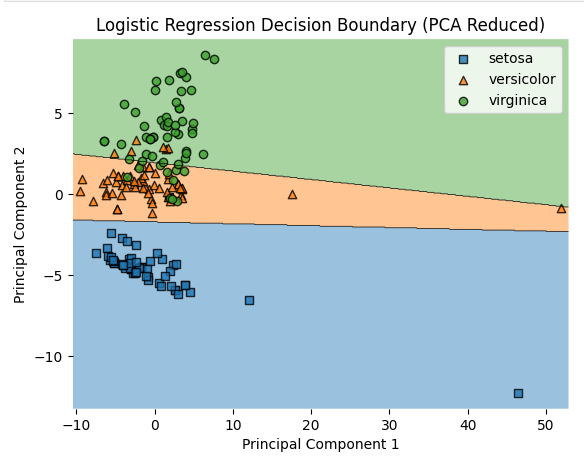Logistic Regression with Jupyter Notebook Link to heading
2. Model Implementation Link to heading
Choosing the Algorithm Link to heading
Use LogisticRegression from sklearn.linear_model.
from sklearn.linear_model import LogisticRegression
# Initialize the Logistic Regression model
model = LogisticRegression(max_iter=200)
Defining the Model Link to heading
Specify parameters such as C, solver, and max_iter. (This is optional for the first turn. We will focus on it later in Hyperparameter Tuning.)
Training the Model Link to heading
Fit the model using the training data.
# Train the model
model.fit(X_train, y_train)
Evaluating the Model Link to heading
Use metrics like accuracy, precision, and recall.
from sklearn.metrics import accuracy_score, classification_report, confusion_matrix
# Make predictions on the test set
y_pred = model.predict(X_test)
# Evaluate the model
print("Accuracy:", accuracy_score(y_test, y_pred))
print("Classification Report:\n", classification_report(y_test, y_pred))
print("Confusion Matrix:\n", confusion_matrix(y_test, y_pred))
Accuracy: 0.8636363636363636
Classification Report:
precision recall f1-score support
0.0 1.00 1.00 1.00 13
1.0 0.64 0.78 0.70 9
2.0 0.90 0.82 0.86 22
accuracy 0.86 44
macro avg 0.85 0.87 0.85 44
weighted avg 0.88 0.86 0.87 44
Confusion Matrix:
[[13 0 0]
[ 0 7 2]
[ 0 4 18]]
Visualizing Results Link to heading
Plot decision boundaries and confusion matrices.
import numpy as np
import matplotlib.pyplot as plt
from mlxtend.plotting import plot_decision_regions
from sklearn.decomposition import PCA
from sklearn.linear_model import LogisticRegression
# Perform PCA to reduce the dimensionality of the feature set to 2
pca = PCA(n_components=2)
X_train_pca = pca.fit_transform(X_train) # Fit and transform the training data
X_test_pca = pca.transform(X_test) # Transform the test data
# Initialize and train the logistic regression model on the PCA-reduced data
model_pca = LogisticRegression(max_iter=200)
model_pca.fit(X_train_pca, y_train)
# Plot decision regions using the PCA-reduced data
plot_decision_regions(X_train_pca, y_train.values.astype(np.int_), clf=model_pca, legend=2)
plt.xlabel('Principal Component 1')
plt.ylabel('Principal Component 2')
plt.title('Logistic Regression Decision Boundary (PCA Reduced)')
# Custom legend with actual class names
handles, labels = plt.gca().get_legend_handles_labels()
plt.legend(handles, ['setosa', 'versicolor', 'virginica'], frameon=True, loc='upper right')
plt.show()
